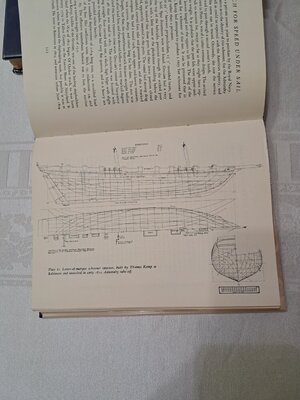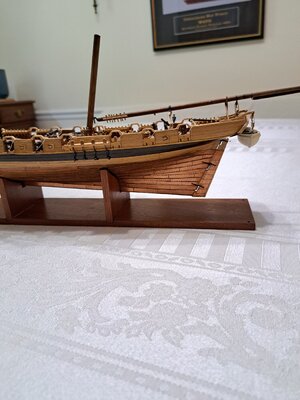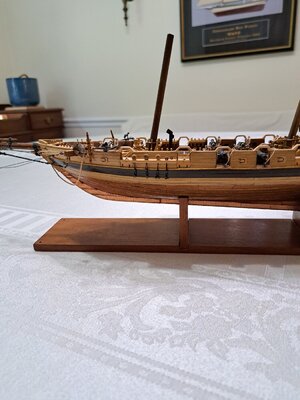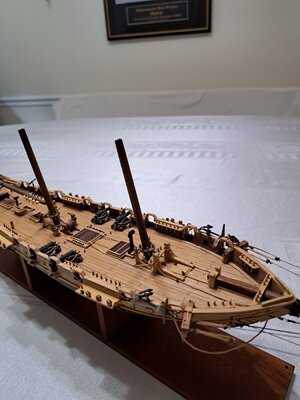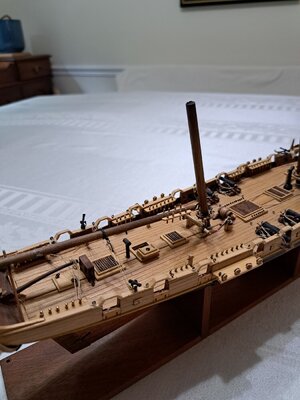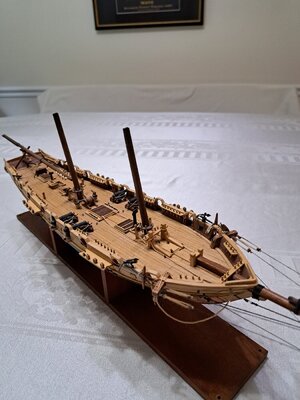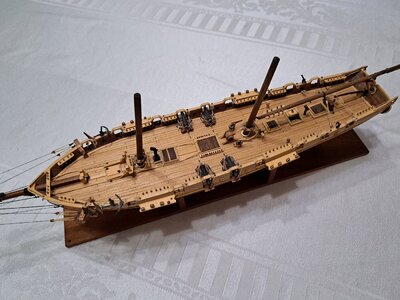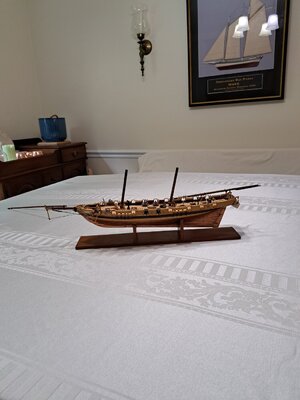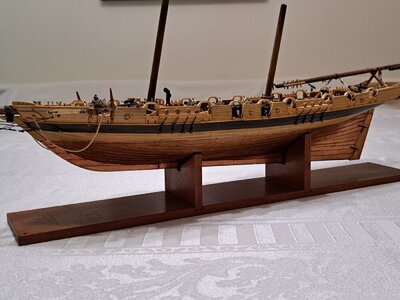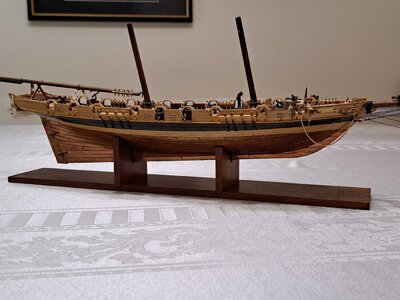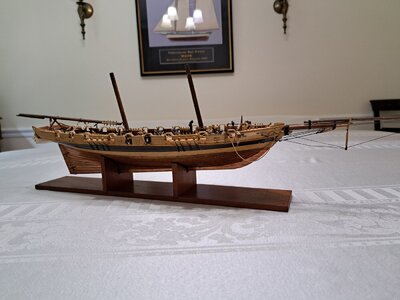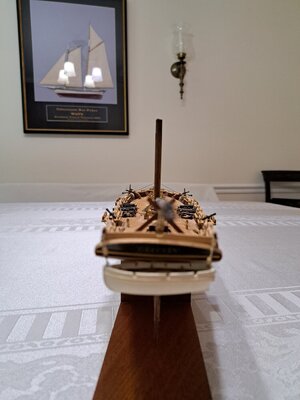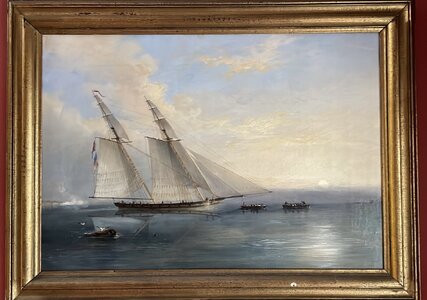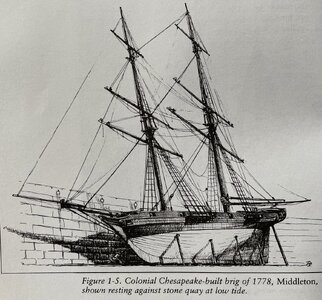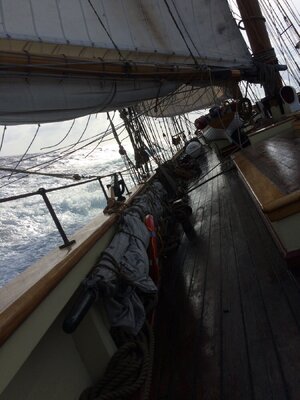Thanks, Shota, I believe She and the Patapsco were both built at Fells Point, Baltimore, by Thomas Kemp (from St. Michael's Md) . I think Grecian was originally designed as a smuggler in 1811 without gunports, which were added later with the intervention of the war in1812 when she was completed, The arches were added to strengthen the bulwarks which were compromised in strength being cut away for the ports. I made mine (and the cap rails) of boxwood for the beautiful color, but above all the density and strength of the wood, as each arch is carved from a single piece.
Captured early in the war by the Brits, she never made it through the blockade and was taken into the Royal Navy, modified, and the lines taken off, which is why we have the lines at all. No preservable line plans were ever created for these boats by the American builders, and it is thanks to the Brits who took off the lines when they captured them, that we have original Baltimore Clipper lines at all.
The Grecian, admired by the British for her speed, had the unique feature that she was broadest abeam amid ships just aft of center. a feature not employed again until 1851 by George Steers in the design of the yacht "America". This feature contributed greatly to the efficient hydrodynamics of the hull. That, and cotton sails, are what gave the "America" her winning edge . The "Dapper Tom" hull that I used did not allow enough material in the roughed out hull to recreate this feature. Something I didn't discover until I was many hours into carving,

so I decided "the heck with it" and moved on.

I admit that what I was after was a cool looking model. And besides, who else (other than an expert in the history) would know! ( I have no shame.

)
Pete


